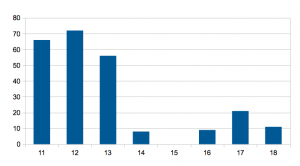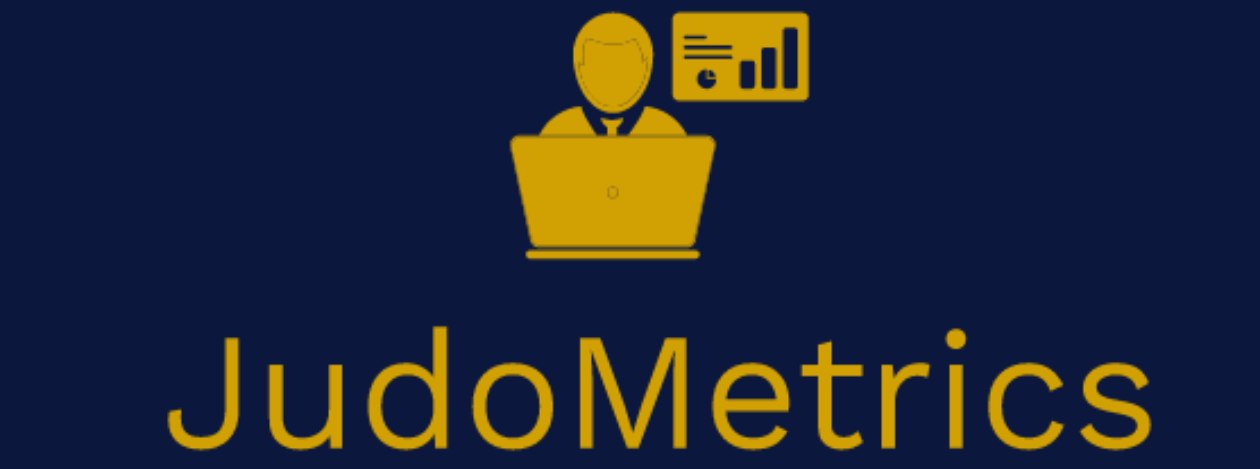As per previous posts, I have been working on a project to collect data from the IJF scoreboards and store them in a database for later study. In this article I want to share some information I have gained from the 2012 Tokyo Grand Slam.
In the last article we looked at day one, in this article we will look at the entire event and discuss a couple of points that come up.
How much actually happens at a Grand Slam?
The 2012 Tokyo Grand Slam was a three day event, spread across 3 mats in the elimination rounds. The semi-finals and finals being held on one mat after a two hour break. In total the scoreboards recorded 1,013 changes to the scoreboards. That includes corrections to scores as we have discussed in earlier articles on this website.
The scoring broke down like this:
- Minute 1: 111
- Minute 2: 176
- Minute 3: 160
- Minute 4: 160
- Minute 5: 163
The Ippons broke down like this:
- Minute 1: 22
- Minute 2: 27
- Minute 3: 31
- Minute 4: 35
- Minute 5: 45
Out of those 160 Ippon scores, only 6 were in Golden Score with there being a total of 30 scores in golden score time.
A very simple look at the numbers above can suggest that it is in minute 2 you are most likely to be scored against and caught for Ippon most often in the final minute.
As per previous posts, the problem with this basic analysis of the 2012 Tokyo Grand Slam is that the data is never as simple as it looks. The software captures every change to the scoreboard and stores it as a record. So the moment the table official hits the Ippon button the database gains an Ippon. Unfortunately errors happen and when the referee changes the score the database gaisn another record but not losing the original Ippon. This means it is hard to use data in the way shown above, especially for scores lower than ippon that don’t stop the match.
It is good to collect that data however, we could with relative ease determine how many scoring errors were made. A cursory examination for example shows 154 Ippons on the official record, where the captured data shows 160. So Ippon was put on the scoreboards incorrectly 6 times across three days.
We can also look at things like the actual time contests started. The system captures the clock at 5:00 minutes, i.e. the start of the match as the names come on the scorebaord. We can easily collect the timestamps from these records and see for example the distribution of starts across the three days.
- 11:xx 66
- 12:xx 72
- 13:xx 56
- 14:xx 8
- 15:xx 0
- 16:xx 9
- 17:xx 21
- 18:xx 11

What we can see is that the competition (across the three days) had the most fights occur between 12 noon and 1pm. This is a 3 mat event, that in the finals section went to a single mat with a break between elimination and finals.
It would be interesting to look at what scores happened in that 12-1 hour. Perhaps there were more Ippons in this period?
This very brief investigation into the data from the event is provided purely to encourage discussion and investigation by others, I know there are real statisticians out there who could dig out interesting information from the numbers. For me this event was mainly about testing the reliability of the data capture and preparing for the next stage where I shall be doing data collection using a Raspberry Pi computer.
I would love to hear your thoughts and opinions.
Lance

Hi Lance,
Have you been able to work on your Rasberry Pi idea?
I was thinking that developing a Rasberry Pi scoring console would be a project that my judoka son would feel interested on. However, the real difference would be on being able to post results to a web database using a standard API, so that results could be published online in real time. My Google search pointed to your page. 🙂
I definitively will not be able to work on this until after I finish my master thesis (hopefully this year), but I would be interested into learning about what type of databases, standard interfaces and APIs exist.
Thanks,
Eric